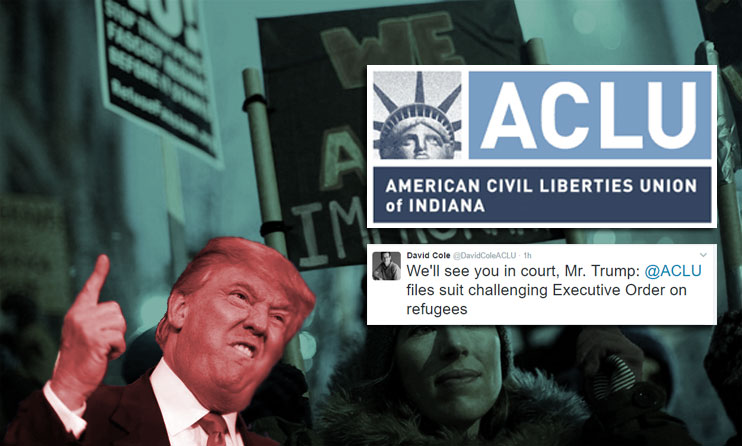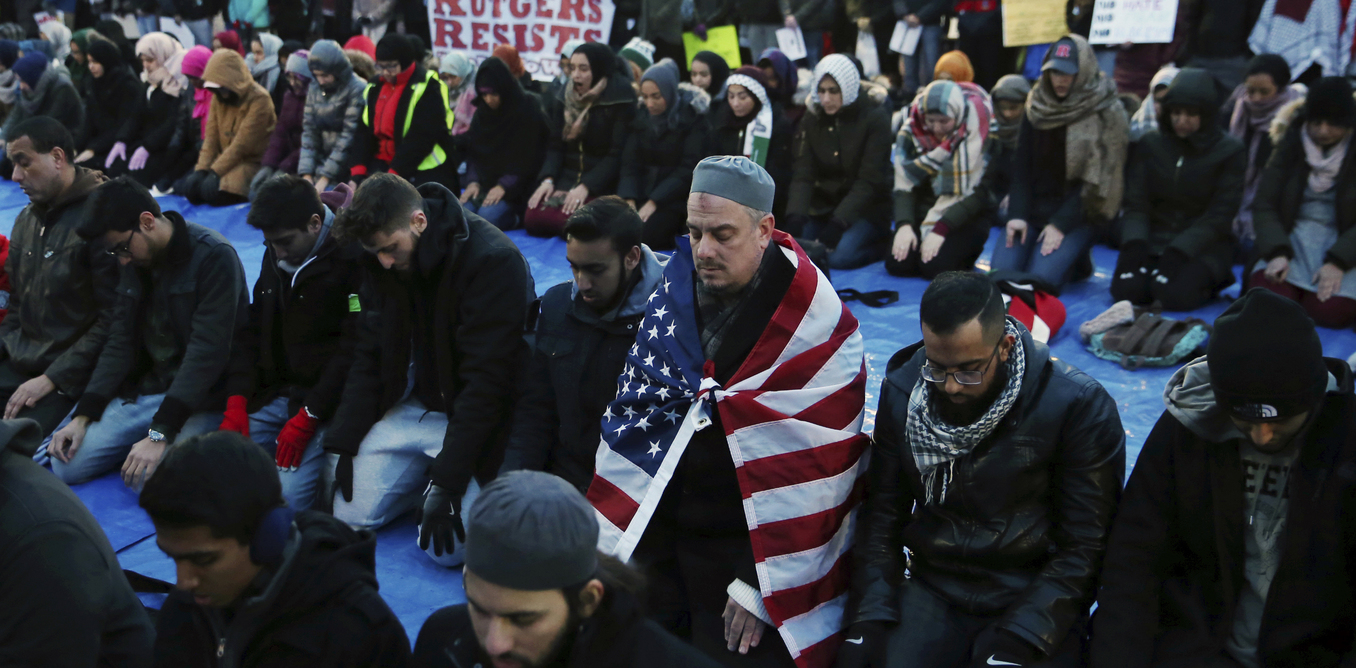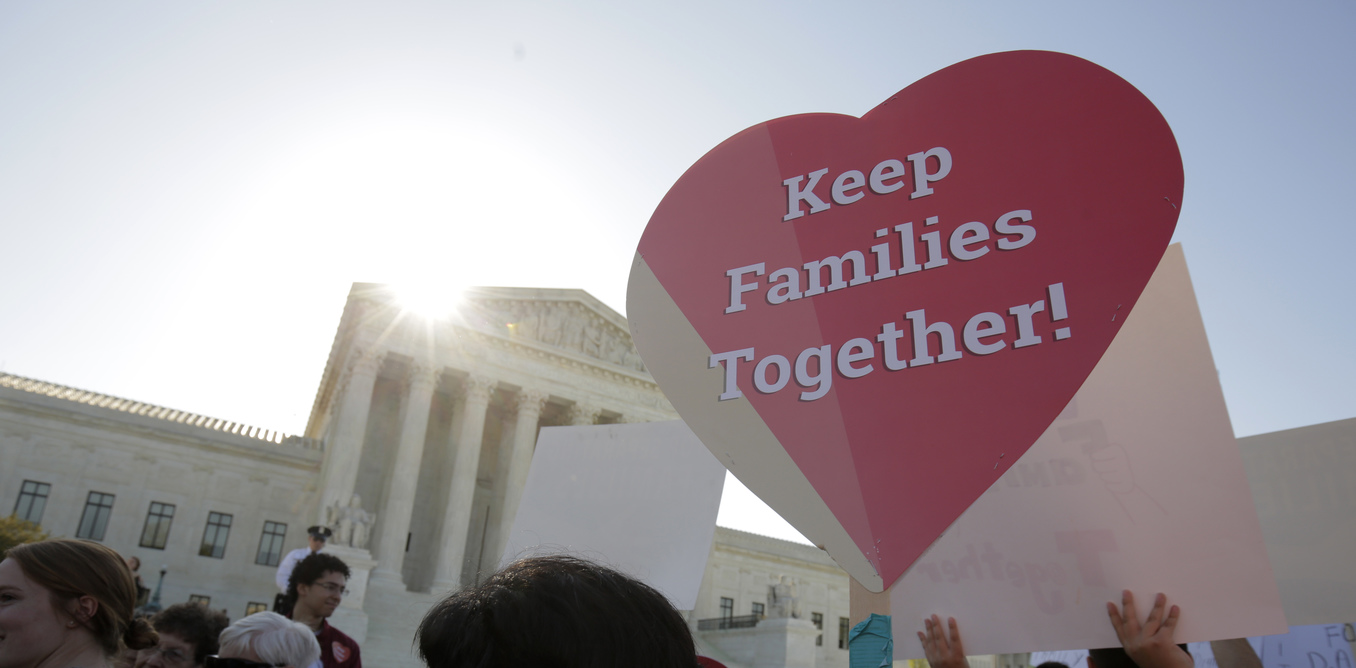Charis Kubrin, University of California, Irvine; Graham C. Ousey, College of William & Mary; Lesley Reid, University of Alabama, and Robert Adelman, University at Buffalo, The State University of New York
Editor’s note: In his first week in office, President Donald Trump showed he intends to follow through on his immigration promises. A major focus of his campaign was on removing immigrants who, he said, were increasing crime in American communities.
In his acceptance speech at the Republican National Convention, Trump named victims who were reportedly killed by undocumented immigrants and said:
“They are being released by the tens of thousands into our communities with no regard for the impact on public safety or resources…We are going to build a great border wall to stop illegal immigration, to stop the gangs and the violence, and to stop the drugs from pouring into our communities.”
Now as president, he has signed executive orders that restrict entry of immigrants from seven countries into the U.S. and authorize the construction of a wall along the U.S. border with Mexico. He also signed an order to prioritize the removal of “criminal aliens” and withhold federal funding from “sanctuary cities.”
But, what does research say about how immigration impacts crime in U.S. communities? We turned to our experts for answers.
Across 200 metropolitan areas
Robert Adelman, University at Buffalo, and Lesley Reid, University of Alabama
Research has shown virtually no support for the enduring assumption that increases in immigration are associated with increases in crime.
Immigration-crime research over the past 20 years has widely corroborated the conclusions of a number of early 20th-century presidential commissions that found no backing for the immigration-crime connection. Although there are always individual exceptions, the literature demonstrates that immigrants commit fewer crimes, on average, than native-born Americans.
Also, large cities with substantial immigrant populations have lower crime rates, on average, than those with minimal immigrant populations.
In a paper published this year in the Journal of Ethnicity in Criminal Justice, we, along with our colleagues Gail Markle, Saskia Weiss and Charles Jaret, investigated the immigration-crime relationship.
We analyzed census data spanning four decades from 1970 to 2010 for 200 randomly selected metropolitan areas, which include center cities and surrounding suburbs. Examining data over time allowed us to assess whether the relationship between immigration and crime changed with the broader U.S. economy and the origin and number of immigrants.
The most striking finding from our research is that for murder, robbery, burglary and larceny, as immigration increased, crime decreased, on average, in American metropolitan areas. The only crime that immigration had no impact on was aggravated assault. These associations are strong and stable evidence that immigration does not cause crime to increase in U.S. metropolitan areas, and may even help reduce it.
There are a number of ideas among scholars that explain why more immigration leads to less crime. The most common explanation is that immigration reduces levels of crime by revitalizing urban neighborhoods, creating vibrant communities and generating economic growth.
Across 20 years of data
Charis E. Kubrin, University of California, Irvine, and Graham Ousey, College of William and Mary
For the last decade, we have been studying how immigration to an area impacts crime.
Across our studies, one finding remains clear: Cities and neighborhoods with greater concentrations of immigrants have lower rates of crime and violence, all else being equal.
Our research also points to the importance of city context for understanding the immigration-crime relationship. In one study, for example, we found that cities with historically high immigration levels are especially likely to enjoy reduced crime rates as a result of their immigrant populations.
Findings from our most recent study, forthcoming in the inaugural issue of The Annual Review of Criminology, only strengthen these conclusions.
We conducted a meta-analysis, meaning we systematically evaluated available research on the immigration-crime relationship in neighborhoods, cities and metropolitan areas across the U.S. We examined findings from more than 50 studies published between 1994 and 2014, including studies conducted by our copanelists, Adelman and Reid.
Our analysis of the literature reveals that immigration has a weak crime-suppressing effect. In other words, more immigration equals less crime.
There were some individual studies that found that with an increase in immigration, there was an increase in crime. However, there were 2.5 times as many findings that showed immigration was actually correlated with less crime. And, the most common finding was that immigration had no impact on crime.
The upshot? We find no evidence to indicate that immigration leads to more crime and it may, in fact, suppress it.
![]()
Charis Kubrin, Professor of Criminology, Law and Society, University of California, Irvine; Graham C. Ousey, Professor and Chair of Sociology, College of William & Mary; Lesley Reid, Professor and Department Chair of Criminology and Criminal Justice, University of Alabama, and Robert Adelman, Associate Professor of Sociology, University at Buffalo, The State University of New York
This article was originally published on The Conversation. Read the original article.






